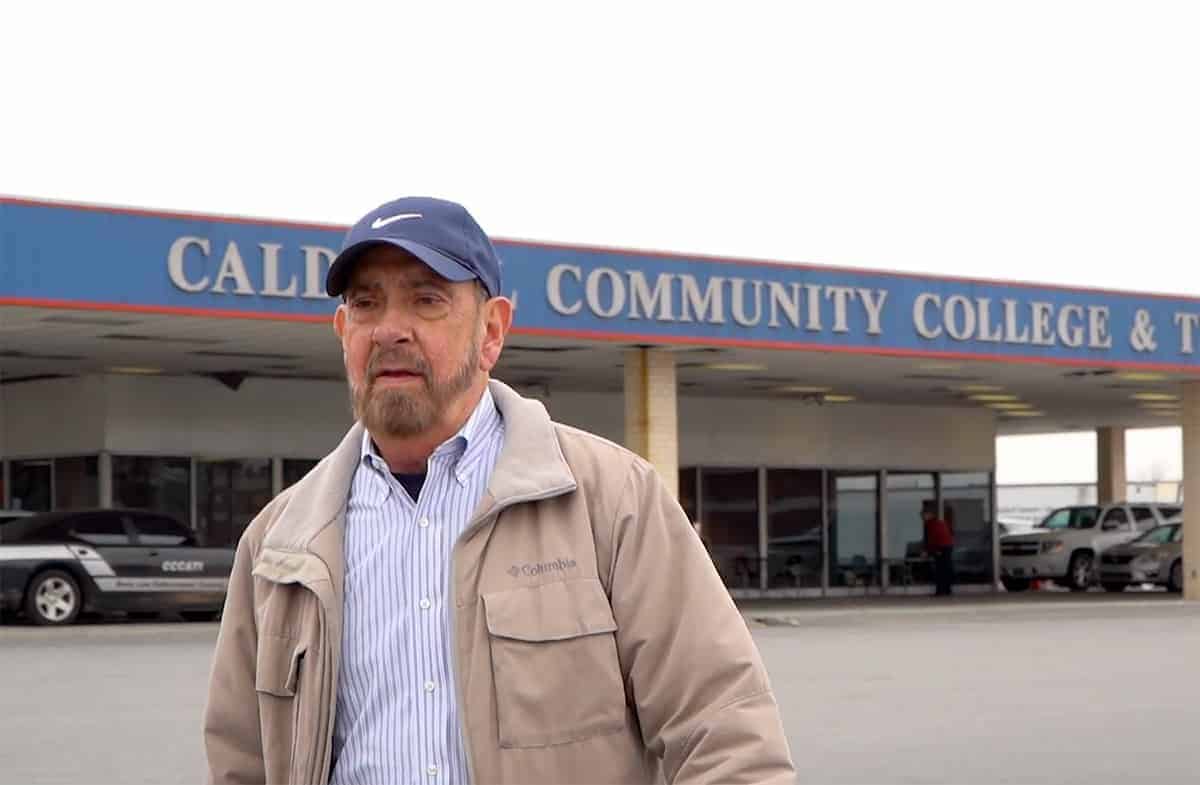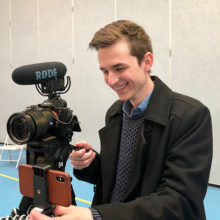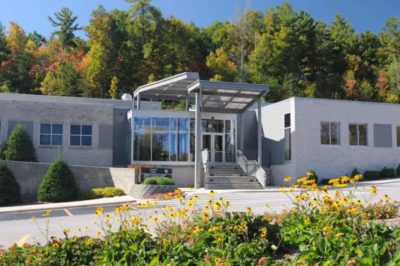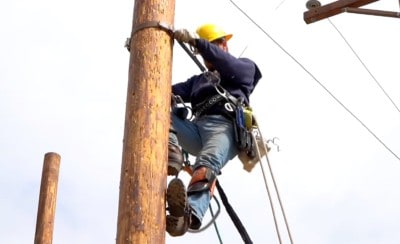
|
|
Enrollment in our state’s community colleges fell 11% from fall 2019 to fall 2020. Every college experienced a net decline in enrollment during this time, except four: Caldwell Community College and Technical Institute, Isothermal Community College, Davidson-Davie Community College, and James Sprunt Community College. What helped them buck the trend?
There’s no magic bullet, of course. But during our conversations, a few themes stood out that may have helped students stay in school during a tumultuous year.
In-person learning is critical
Transitioning a course to fully online learning can be quite difficult, even for purely academic subjects. The technical programs offered by community colleges teach hands-on skills, like welding, cosmetology, truck driving, and more. Replicating these in a virtual environment just doesn’t work well.
Dr. Mark Poarch, president of Caldwell Community College and Technical Institute, said his team conducted focus groups and student surveys near the start of the pandemic. The results were clear: Many students didn’t care for online learning.
“They prefer face-to-face interaction with their faculty members,” Poarch said. “We tried to get back as quickly as we could to as much in-person learning as we could.”
Students aren’t the only ones who disliked virtual learning. For faculty, many of whom had never taught online, the transition was painful.
“There was a faculty member who … literally had big tears running down her face, crying, saying that she just couldn’t do this,” Poarch said. Ultimately, her stress was eased over time by open communication and support from administrators and colleagues, and she successfully taught her course online.
Davidson-Davie Community College offered hybrid classes as soon as they were able.
“For the first meeting of the class, everybody met virtually,” said Dr. Rhonda Coats, vice president of student affairs. “And then the faculty worked with who in the class wanted to come to campus and who wanted to synchronously log in.”
The transition was easier in courses where virtual learning was already happening. “Fortunately, we had online components in nearly every class,” said Mike Gavin, director of marketing and communications at Isothermal Community College.
“Some of the classes that rely heavily on face-to-face instruction were tricky, but our instructors and distance learning staff worked hard to make it happen quickly and effectively,” he said. “By summer, we had online options in all programs with limited personal contact in the areas that required it.”
Keeping up with dual enrollment students
Career and College Promise (CCP) courses allow high school students to enroll for college credits. The pandemic made it harder for many community colleges to stay connected with those students, who were forced into online learning arrangements.
“Our communication with students took a huge hit when the pandemic began,” said Hannah Lowery, lead CCP advisor at Isothermal. “We adapted to virtual forms of communication and outreach. For example, Zoom advising appointments, Adobe Sign, and email/phone communication became a new normal.”
Dr. Coats said Davidson-Davie actually saw a slight increase in CCP enrollment during the pandemic. What was their cutting-edge strategy for getting the word out to students?
“It was an old-fashioned postcard,” Coats said. “Just random people might have seen that. So we picked up more of our dual-enrolled students during this pandemic as well.”
Some dual-enrolled students also benefitted from the resources of their respective K-12 public school systems.
At Isothermal, Lowery noted, “The majority of our [CCP] students have a laptop through their high school that they are able to take home. This helped make the transition to remote learning possible.”
Wraparound support from a distance
Lowery said those dual-enrolled students at Isothermal expressed struggles with their personal lives and mental health, exacerbated by the pandemic.
“Many of our students were working full-time hours or caring for family members and younger siblings during the pandemic,” Lowery said. “The subject of mental health has been a hot topic since the pandemic. We found that some students were vocal about the extra stress and lack of motivation to perform well in school.”
The community college system, by its mission, exists to serve all students regardless of their financial status. Students in this system are more likely to be displaced by unexpected events, like COVID-19, than their university counterparts.
Wraparound services are critical to retaining these students. This was true even before the pandemic — on each campus you’ll find clothing closets, food pantries, and advising officers who connect students with financial aid.
But visiting campus for these services was not an option at many colleges when the pandemic forced them to close their doors. Support services had to be taken online in a way that replicated the in-person experience.
Davidson-Davie changed their online advising system to a virtual kiosk model, where students could just log on and join a waiting room with no appointment. Caldwell began offering students the ability to sign financial aid documents online.
Empowerment through information
Even students who didn’t need additional support suffered from the lack of in-person access. Messaging that would usually live on an on-campus banner had to be moved online.
Edward Terry, Caldwell’s executive director of community relations, said the college took a multi-pronged approach to keep students updated on pandemic rule changes and other announcements.
“We found that if students weren’t checking their email, they were checking social media, or they were checking the website,” he said. The college also stayed in contact with health officials at local hospitals and the K-12 system to ensure their information was consistent.
“The way we would blast things out in multiple ways, multiple channels, we felt like we did a good job of reaching those students in our community with the information and being able to engage with them in real time,” Terry said.
Part of that engagement was actively finding students at risk of dropping out, making contact with them, and sometimes offering incentives for their return.
For example, all colleges in the system received CARES Act funding from the federal government, half of which was earmarked for emergency student financial aid grants.
That meant the colleges were looking for students in danger of dropping out, or those who already had, and directly offering them cash for tuition.
“We used part of that money for students who withdrew because of COVID-related issues,” said Randy Ledford, vice president of instruction at Caldwell. “Whether that was they just couldn’t complete because of broadband issues, or having to take care of family members, or they ended up contracting the virus.”
He said the college used other parts of its CARES money to purchase infrastructure like check-in stations, PPE, socially distanced furniture, and other preventative care measures.
At Isothermal, a targeted marketing campaign reached out to recent high school graduates at four-year colleges, hoping they would take online transferable courses rather than paying high tuition at a time when universities were largely remote.
Right place, right time?
Other colleges could have done all the above and still experienced a loss of enrollment during the pandemic. It’s important to be mindful of externalities here — the frameworks, strategies, and trends that existed at these colleges prior to the COVID-19 pandemic.
Davidson-Davie, for example, had been experiencing enrollment increases for the past several years. Dr. Coats attributed this to the strategic plan the college adopted over a decade ago and more recently a strategic enrollment management plan from 2015.
Students here can register for some courses up to three semesters ahead, one incentive to stick around.
“When the pandemic happened, students already had registered for summer, they already registered for next fall,” Coats said.
2020 was also the first year the college offered the Ignite Davie scholarship, which offers free tuition for Davie County high school grads and played a role in boosting enrollment.
Similarly, Isothermal offers residents of Rutherford or Polk counties free tuition through an endowment called the Powers Promise. “This is a great advantage,” said Gavin.
“Our long history of a robust online presence certainly helped. I think our enrollment management, advising, financial aid, and marketing areas all came together well and worked up some plans that had good results,” he said.
Caldwell had just created the Center for Excellence in Teaching and Learning, a formal pipeline and support system for professional development, in summer 2019. This gave them a pre-existing toolkit for assisting faculty members in the shift to online learning.
Recent tech initiatives in Caldwell County, including the distribution of 125 Chromebooks to students, predated the pandemic but became especially useful during the unexpected shift to virtual learning.
“I guess it was a bit fortuitous, in some ways, because we had partnered with Google to install video conferencing classrooms in three traditional high schools in Caldwell County,” Poarch said. “We’re still doing that. I think that’s going to be a great tool for us to reach students even post-pandemic, you know, where travel or other things can be a barrier.”





